| Diyarbakιr lies in the middle of the South East Anatolian region on the right bank of the Tigris. |
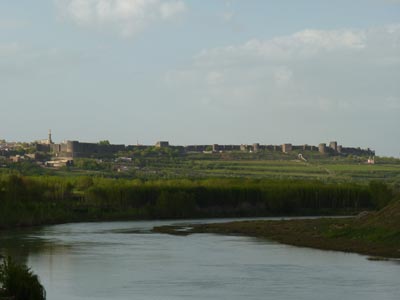 |
 |
This city and its surroundings have kept their importance in every era of history. It became the cradle of 26 civilizations such as Armenians, Romans, Macedonians, Persians and Ottomans. |
The city consists of two main sections called the Inner castle and the Outer castle.
THE OUTER CASTLE or DISKALE
This “castle” or this part of the city was built by the Roman Emperor, Constantine II between 346 and 349 A.D. It was completely restored by the various civilizations which ruled the city afterwards. There were approximately 30 of these civilizations such as the Byzantines, the Abbasids, the Mervanlis, the Artuklus, the Ottomans, etc.
The city is surrounded by big walls made in black basalt stones that gave the nickname “the Black Diyarbakιr” to the city in the Roman period. These ramparts didn't resist the attacks of the Arabic tribes in the 7th century, nor the troops of Mongols’ in the 13th century.
|

Diyarbakιr walls
|
The walls are decorated with inscriptions which give information about these various peoples and document the building and restorations that took place throughout the years. |
The walls are 12 meters high, and 3 to 5 meters wide. They are the fourth longest walls in the world, extending over 5.7 kilometers. Seen from the sky, the impressive ramparts look like a fish called turbot. They are the most beautiful examples of medieval military architecture.
The walls consist of four gates and 82 towers and bastions. The main gates of the wall are the Harput gate, the Urfa gate and the Mardin gate. On each gate, we can read inscriptions.
The towers usually have two floors but some of them have three or four. The lower floors were used as a storage place and a cellar whereas the upper floors were used for military purposes. |
 |
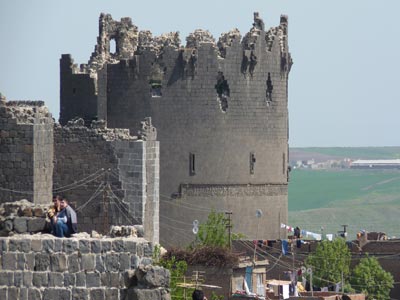
One of the towers
|
Two of the main towers lie in the south part of the walls and were built in 1208 by the sovereign Artukide Melik Salih Memduh.
The first one is the bastion of the “Seven Brothers”: or the Yedi kardesler tower. On the tower we can see a winged lion and an eagle with two heads.
The second one is called the Ulu Beden tower. |
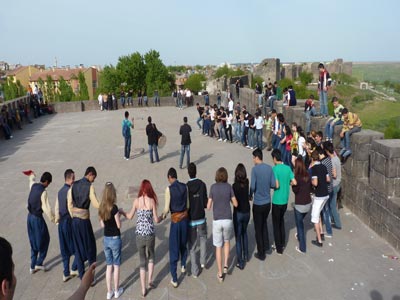
Dancing on the walls |

Works on the walls
|
A legend is linked to the building of these two towers:
THE LEGEND OF BENUSEN
The king of that time called for a competition. In the place where we can now see these two towers, he ordered two separate very high, strong towers to be built. He drew the plans of the towers. Two men wanted to take on this task and accepted the challenge. The first one was a master artisan and the other was his assistant .The dream of the artisan was to show his talent one more time and the dream of the apprentice was to prove that he was more talented than his master. The master built the Seven Brothers tower and his apprentice built the Mighty Beden Tower. The king preferred the tower built by the assistant. The master devastated by such a choice threw himself from the tower he had made.
This also explains the reason why the towers are called ‘Ben u Sen’. It means ‘you or me’.
The name of the Seven Brothers tower also comes from a legend:
THE LEGEND OF THE SEVEN BROTHERS
Enemies surrounded Diyarbakιr. Battles had lasted for days when the entire city fell except for one tower which was defended by seven brothers. In order to come to an agreement, the enemy king sent a messenger to the brothers who expressed their conditions of surrender.
The king and the commanders were to come personally to take over the tower and spare the lives of the seven brothers. The king accepted the terms and entered the tower with his commanders. But as soon as they entered, there was an explosion. The seven brothers had blown up the gun powder yard. The king, his commanders and the seven brothers died in the explosion but the city was saved.
THE INNER CASTLE or IÇKALE
It is situated on a wide flat area on the eastern side of the extensive basalt plateau and probably dates back to the era of the first settlers, the Hurrian-Mitanis in 4000-3000 B.C. The first walls which surrounded the Inner Castle collapsed but we can count 16 towers and four gates whose names are the Saray Gate, the Kupeli Gate, the Feith Gate and the Ogrun Gate.
|
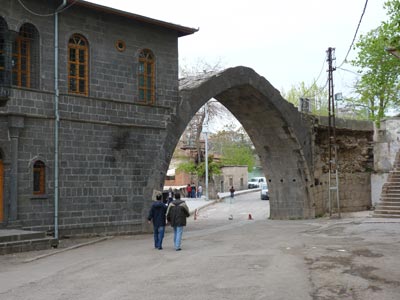 |
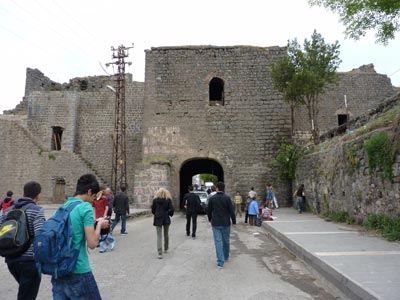 |
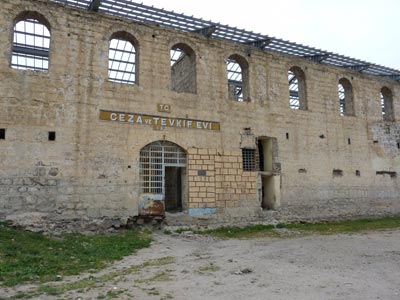
|
It is supposed that this place served as the city’s administrative centre. |
| Very precious buildings can be seen: The Castle Mosque, the Fountain with a lion, Saint George Church. |
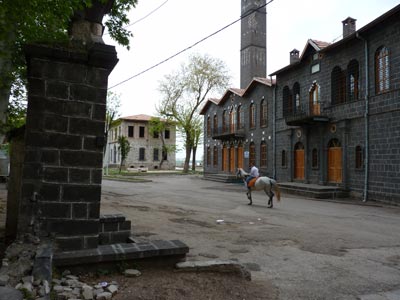
|
 |
 |
| |
Saint George Church
It is situated in the northeast corner of the Inner Castle, on the high cliffs. Its construction date is unknown. It is built with black stones in Byzantine style. |
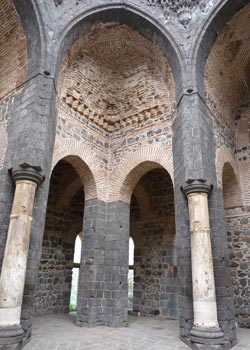
|

|
It has a dome made of elliptic bricks that looks like a finger print in the west-eastern section.
There are round columns in the front and an arched cover in the back. There are passages to four directions in the center of the church.
|
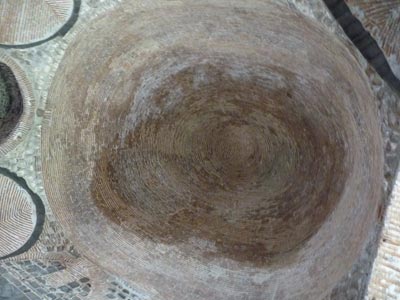 |
THE LEGEND OF THE FOUR FOOTED MINARET
The “Four Footed Minaret” was constructed in 1500 by Kasim Khan of the Akkoyunlu. The legend has it that if you walk around the columns seven times, your wishes will be come true. |
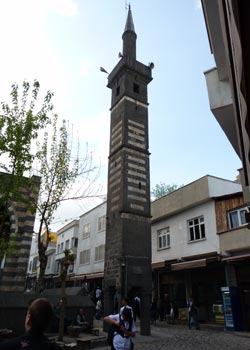 |
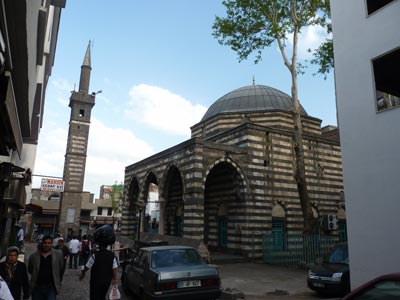 |
| |